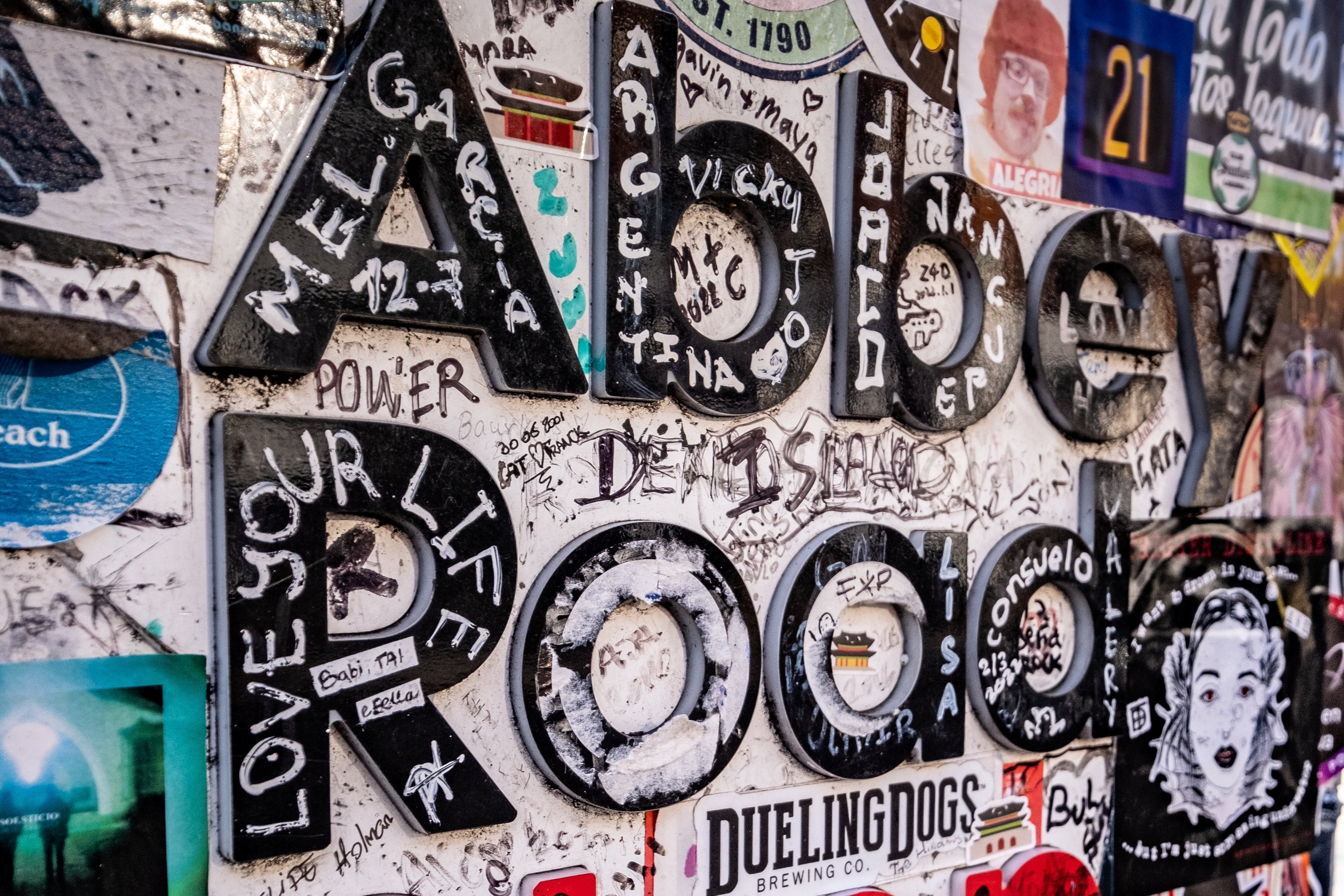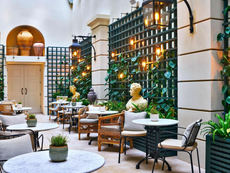The Independent's journalism is supported by our readers. When you purchase through links on our site, we may earn commission.
Britain’s top spots for pop culture pilgrimages ranked
Music, TV, and movie - loving Brits are planning holidays and city stays around modern cultural landmarks rather than heading abroad

Your support helps us to tell the story
From reproductive rights to climate change to Big Tech, The Independent is on the ground when the story is developing. Whether it's investigating the financials of Elon Musk's pro-Trump PAC or producing our latest documentary, 'The A Word', which shines a light on the American women fighting for reproductive rights, we know how important it is to parse out the facts from the messaging.
At such a critical moment in US history, we need reporters on the ground. Your donation allows us to keep sending journalists to speak to both sides of the story.
The Independent is trusted by Americans across the entire political spectrum. And unlike many other quality news outlets, we choose not to lock Americans out of our reporting and analysis with paywalls. We believe quality journalism should be available to everyone, paid for by those who can afford it.
Your support makes all the difference.The Beatles’ famous Abbey Road crossing, graffiti murals by Banksy, and Princes Street in Edinburgh - the site of an iconic scene from the film Trainspotting - were all rated among the top locations for cultural tourism in the UK.
London’s 23 Heddon Street, as featured on the cover of David Bowie’s Ziggy Stardust album, Castle Howard near York, where the classic Brideshead Revisited was filmed and locations in Birmingham - home to the “Peaky Blinders” are also popular trip sites.
In Northern Ireland, Led Zeppelin fans flocked to Giant’s Causeway, the album artwork for Houses of the Holy.
Following the results of a Premier Inn survey of 2,000 adults, a leading culture expert has revealed other cultural destinations worth checking out, such as Oxford’s “Narnia Door” – the inspiration for CS Lewis’s iconic book series, and the village Portmeirion in Wales, site of the cult 1960s TV show The Prisoner.
Dr. Ruth Adams, senior lecturer in cultural & creative industries at King’s College London, worked with the hotel company to compile a map of the top 10 most culturally iconic locations.
The list includes London’s Portobello Road – which features in both Paddington movies - and houses Will’s bookshop in the movie Notting Hill.
Dr. Ruth Adams said: “Visits to TV, film, and musically significant locations are modern pilgrimages. For a small country, the UK punches well above its weight as both a tourist destination and a cultural powerhouse.
“We create world–leading art and popular culture – from literature to film, television and music, and many people like to plan their holidays around pilgrimages to sites of cultural significance to get closer to their idols and fantasies.
“Going to locations that the Beatles or David Bowie not only visited but made iconic on album covers can bring fans closer to the ‘aura’ of these stars.”
Other cultural hotspots film buffs have flocked to include the town of Wells in Somerset, the setting for the iconic comedy Hot Fuzz.
On arrival, visitors sometimes find places are not always as they seem.
One small–screen aficionado was baffled when traveling to the village of Brentwood in Essex (the home of reality show The Only Way Is Essex) – “because it was nothing like TOWIE had made it out to be.”
The research found 51 per cent of Brits have visited a spot in the UK purely because it was linked to their favourite movie, TV show, literature, art, or music.
Just over a third (31 per cent) even say visiting a famous location really is a pilgrimage to them – something they feel they “need” to do.
Premier Inn managing director Simon Ewins added: “Modern–day pilgrimages to places made famous through popular culture are becoming even more popular and there are so many of these hidden gems in the UK that make perfect locations for holidays and short breaks.
"There are many that may not have even realised the places they are visiting are famous backdrops.
“While many, like Battersea Power Station, are well–known to fans of Pink Floyd and beyond, there are many that are much more unassuming but well worth a visit.
"We hope with the creation of our interactive map, visitors can create exciting plans this year to visit some of their favourite spots across the UK and make the most of what the UK has to offer.”
The research also found more than one in 10 (12 per cent) have even travelled as far as 250 miles to make one of these pop–culture pilgrimages.
Nearly two–thirds (65 per cent) visit famous spots to see what they look like in real life, while 44 per cent go just for the photo opportunities.
While 21 per cent admitted to having recreated famous scenes from TV and movies when they’ve visited a cultural hotspot.
And 12 per cent even claim to have moved to a town or city purely because of its connection to a piece of media or culture they adore.
A love of pop culture even extends past making a trip, as 13 per cent have named a pet after a character in their favourite media.
The study, carried out via OnePoll, also found one in 10 have named their child after a beloved character in a film, book, TV show or other pieces of culture.
Dr. Ruth Adams’ top 10 cultural tourism locations:
1. Abbey Road
The site of the most famous pedestrian crossing in the world, this is located next to the recording studio where The Beatles reinvented pop music with the help of their producer George Martin.
2. Giant’s Causeway
This extraordinary landscape, composed of around 40,000 interlocking basalt columns is located on the coast of County Antrim in Northern Ireland. It was declared a World Heritage Site by UNESCO in 1986 but is probably best known to rock music aficionados for appearing on the cover of Led Zeppelin’s 1973 album “Houses of the Holy”.
3. Portobello Road
Portobello Road in West London is home not only to the world’s largest antique market, but some of the most famous shops in cinema. On this road you can find the real-life sites of Gruber’s Antique Shop featured in Paddington and Paddington 2 and of course, Will’s bookshop from Notting Hill.
4. Princes Street
Edinburgh’s most famous street for shopping, or shoplifting, was the site of the opening scenes of Danny Boyle’s 1996 film adaptation of Trainspotting, and a location used in numerous other films, including Cloud Atlas and The Illusionist.
5. The Angel of the North
Anthony Gormley’s massive steel statue – 20 meters high and with a wingspan of 54 meters – dominates the skyline of Gateshead, Tyne & Wear. Its status as a local icon was assured in May 1998, when it was draped in a giant football shirt bearing the name and number of another local legend, Alan Shearer.
6. Fern Cottage, Port Isaac
Fern Cottage is famous as the home of Doc Martin, the protagonist of the hugely popular ITV drama series starring Martin Clunes. It is located in the picturesque fishing village of Port Isaac on the north coast of Cornwall, which doubles as the fictional location of Portwenn.
7. Portmeirion
While Patrick McGoohan’s character ‘Number 6’ was always trying to break free from ‘the Village’ in the cult 1960s show The Prisoner, Portmeirion in North Wales is somewhere holidaymakers now want to escape to.
8. Narnia Door, St Mary’s Passage, Oxford
This is a decorative wooden door that is widely believed to be the inspiration for The Chronicles of Narnia, by C.S. Lewis, who studied at Oxford and was elected a Fellow of Magdalene College in 1925, teaching there for three decades. The door is embellished with carvings that look just like Narnia characters Mr. Tumnus and Aslan the Lion, and there is even an old-fashioned lamp post nearby.
9. The World of Beatrix Potter
The World of Beatrix Potter is an attraction in the Lake District that allows visitors to feel as if they have stepped into her books, to be fully immersed in the world of Peter Rabbit and Jemima Puddleduck. The site also features a real ‘Peter Rabbit Garden’, designed by a Chelsea Flower Show gold medal winner.
10. Banksy Street Art in Bristol
The identity of the UK’s most famous street artist remains a closely guarded secret, but it is known that he is a proud Bristolian. His work now sells for hundreds of thousands of pounds – and occasionally self-destructs – in prestigious auction rooms around the world, but also can be seen for free on the city’s walls.



Join our commenting forum
Join thought-provoking conversations, follow other Independent readers and see their replies
Comments